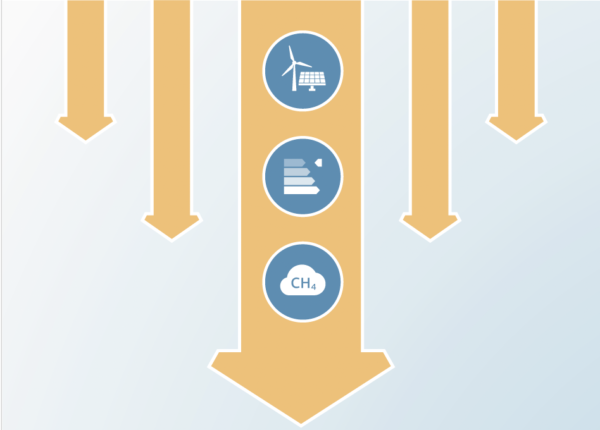Submission to the Australian Government's review of the Safeguard Mechanism
Authors
Bill Hare, Anna Chapman, Victor Maxwell
Share

In 2022 the new Australian Government sought consultation from experts and interested parties on its proposed reforms to the Safeguard Mechanism to help industry reduce emissions in line with its climate targets. The Safeguard Mechanism requires Australia’s largest greenhouse gas emitters to keep their net emissions below an emissions limit (a baseline).
Safeguard Mechanism reform: context
- The Safeguard Mechanism has not been effective in reducing emissions.
- The fossil fuel industry represents more than 55% of Safeguard Mechanism facilities – LNG around 25%, coal around 24% and other oil and gas around 8%.
- Research highlights the urgency for Australia to play its part in limiting additional global warming by aligning its targets and policies with 1.5°C.
- Australia’s partners in the Pacific particularly will be looking to see how Australia reduces emissions as opposed to engaging in accounting measures such as offsets that ultimately don’t reduce emissions to the atmosphere.
- Planned new and expanded LNG, coal and gas production will significantly increase the amount of emissions from the present safeguard mechanism facilities, which means the Safeguard Mechanism must have regulatory strength, strong compliance and a 1.5 degree compatible target to provide appropriate market signals to companies considering investments in carbon intensive activities.
- The government should go beyond its 43% emissions reduction target: it is not 1.5°C compatible.
- The 2030 43% reduction target creates a situation where there is an inverse relationship between emission reductions in the safeguard mechanism sector and emission reductions from the rest of the economy. Higher emission reductions in the safeguard sector mean lower emission reductions in the rest of the economy if the 43% target remains fixed.
- The abatement potential for the Safeguard Mechanism identified in the 2021 Reputex report would reduce Safeguard Mechanism emissions to 35% below 2021 levels, but given the constraints of the 43% target would require only a small reduction of 4% from 2021 levels by the rest of the economy, which would account for about 48% of Australia’s emissions in 2021.
- For 1.5°C compatibility, Australia would need to reduce emissions to at least 60% below 2005 levels by 2030.
Key recommendations
1. If the government does not increase its present 43% target it should ensure that the Safeguard Mechanism facilities in aggregate reduce real emissions without offsets at least the same rate as the rest of the economy (excluding the power sector and LULUCF) with target of at least a 15% reduction from 2021 levels by 2030.
The Safeguard Mechanism needs to reduce industrial facility emissions at least by 15% from 2021 levels by 2030 and then accelerate reductions post 2030, in line with meeting the national 2050 net-zero target.
2. In order to match the abatement potential identified in the Reputex 2021 report for the safeguard mechanism sector the government needs to increase its 2030 target to about 59% below 2005 levels.
This would have the safeguard sector at about 25% below 2005 levels by 2030 with the rest of the economy around 28 to 29% from 2005 levels. From 2021 the safeguard mechanism would reduce at about the same percentage rate as the rest of the economy.
3. The government should set emission limits for individual industrial facilities based on a linear emissions pathway from current levels to zero emissions by 2050.
This is possible through setting absolute emission targets for each facility, based on a linear emissions pathway from current levels to zero emissions by 2050. This would support the government’s net zero target.
4. To ensure real emissions reductions, the government should use the opportunity of reforming the Safeguard Mechanism to establish a full emissions trading system (ETS), similar to the EU ETS.
This will allow facilities to meet their baselines and allow future integration with other international emissions trading systems, such as the EU ETS. It is essential the trading system is well-regulated, has accurate data, with independent checks and comprehensive compliance measures.
5. The government should revisit its decision to not change the Safeguard Mechanism’s coverage threshold and reduce it from the current level to 100 ktCO2e/yr to 25 ktCO2e/yr.
The Safeguard Mechanism currently applies to facilities that emit more than 100 ktCO2e emissions per year. Lowering this threshold to 25 ktCO2e/yr will ensure the bulk of emissions from high emitting facilities are covered. It would also avoid issues arising where, as the Safeguard Mechanism begins to effectively reduce emissions, the number of facilities that are under the 100kt/yr will increase.
6. The government should also increase the Safeguard Mechanism’s coverage overall.
The government should also consider expanding beyond facilities to include all of the registered corporations that report their emissions to the Clean Energy Regulator. This would provide a deeper emissions trading market and would ultimately cover more than half of Australia’s current emissions.
7. Offsets should not be allowed in the reformed Safeguard Mechanism.
The use of carbon offsets that reflect carbon storage on land by, for example, tree planting, is scientifically flawed. Carbon offsets are used by fossil fuel companies to greenwash emissions-intensive projects rather than focusing on real emission reductions. The reformed Safeguard Mechanism should drop, or quickly phase-out, the ability to use offsets to meet regulated emission limits. The focus should be on real emission reductions.











